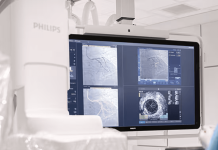NanoVibronix has completed the first phase of a randomised control trial with UroShield, the company’s disposable ultrasound device designed to prevent catheter-associated urinary tract infections.
The pilot phase served to refine recruitment and retention strategies, along with assessing intervention and data collection tools. The initial stage of the trial, which was completed at the University of Michigan, is the precursor to the full study that will commence this year.
Shares in NanoVibronix opened 4.7% higher at market open on 6 January compared to a pre-announcement market close. The US company has a market cap of $2.3m.
Related: CathWorks completes enrolment in CAD treatment system trial
Dr Lona Mody, professor of internal medicine at the University of Michigan, said the team “achieved the goals of the pilot phase”.
NanoVibronix’s CEO Brian Murphy said with the validation pilot now complete, the research team at Michigan University “can advance to the next phase.”
As per a previous announcement, the company included 30 patients in the pilot phase. The full study will enrol an estimated 300 participants.
UroShield was developed by NanoVibronix to prevent bacterial colonisation and biofilm formation on indwelling urinary catheters. The device generates low-intensity ultrasonic surface acoustic waves throughout the catheter, which the company says interferes with bacterial attachment by creating an “acoustic shield”. The prevention of biofilm formation means infections, caused by bacteria such as Escherichia coli, are less likely to occur during catheter procedures.
UroShield is CE marked and is currently available on England’s National Health Service (NHS). The NHS watchdog National Institute for Health and Care Excellence (NICE) states that the device may be cost-saving in hospitals and in people with repeated infections or catheter blockages in primary care. The agency previously stated in 2022 that data on clinical effectiveness was limited, calling for further research.
NanoVibronix’s upcoming study is being conducted with an eye on commercialisation in the US market. Murphy said the next phase of the University of Michigan study is “expected to be conducted concurrently with our preparations for the launch of UroShield in the US, subject to 510K clearance with the U.S. Food and Drug Administration”.
Whilst ultrasound has historically been used for diagnostic imaging, its applications are expanding. The US Food and Drug Administration (FDA) stated in 2021 that it was receiving an increasing number of therapeutic ultrasound device submissions applications.
The FDA approved Histosonics’s Edison system in 2023, which uses ultrasound to break up tumours. The regulator has also approved Recor’s Paradise system, a renal denervation device that uses ultrasound to reduce blood pressure. Ultrasound is also being used to enhance therapy such as Carthera’s and Cordance Medical’s devices that temporarily open up the blood-brain barrier, both of which have received breakthrough designation status.






